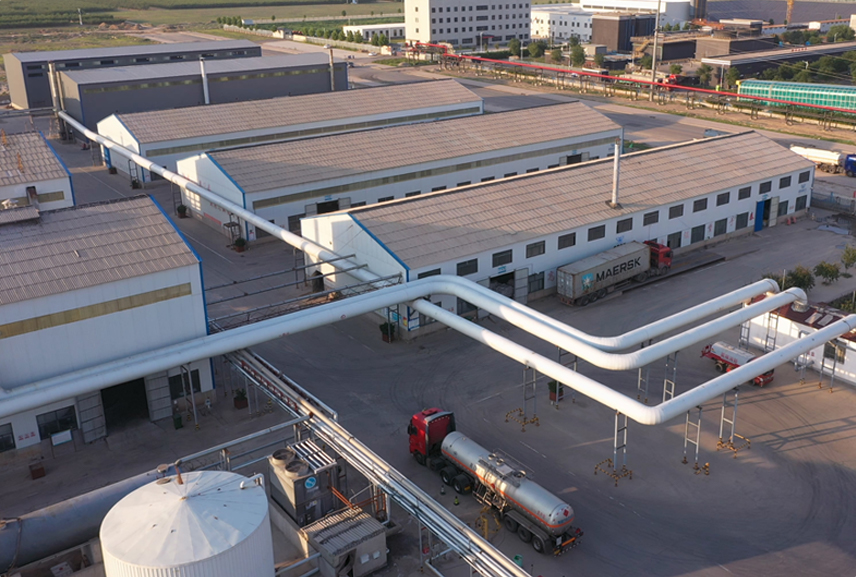In the world of detergents, whether it's laundry, dishwashing, or household cleaning, maintaining the correct concentration is critical. HEC thickeners are used to thicken liquid detergents, giving them a more viscous and stable texture. This increased viscosity ensures that the detergent adheres to surfaces, penetrates stains more effectively, and stays in the target area longer, ultimately improving cleaning performance.
Detergents are often affected by various environmental conditions, such as temperature changes. The stability of HPMC ensures that the consistency of the detergent remains the same across different situations, providing a consistent user experience.
Liquid detergents need to dissolve quickly and completely in water to be effective. HPMC aids in the solubility of these detergents, ensuring they dissolve effortlessly, even in cold water.
In some cases, detergents contain abrasives or solid particles for scrubbing and cleaning purposes. HPMC can help suspend these particles evenly throughout the detergent, preventing settling and ensuring even distribution when the product is used.
| Item | Unit | Standard Specifications |
| Appearance | / | White powder,free flowing |
| Loss on drying | % | 4-6 |
| Residue | % | 3.5 |
| Methyl | % | 49-26 |
| Hydroxypropyl | % | 7-14 |
| Ph value(25C) | / | 6-8.5(neutral) |
| Gel temperature | ℃ | 60 degree/75 degree |
| degree of fineness | mesh | 100 mesh,>96%80 mesh,>100% |
| Apparent density | g/m3 | 0.4-0.6 |
| proportion | g/L | 420-520 |
| Surface Tension(2%solution) | dyn/cm | 42-56 |
| Water retention | % | ≥92 |
| Light Transmittance | % | 65-90 |
| Carbonization temperature | ℃ | 280-300 |
| Discoloration temperature | ℃ | 190-200 |
Related Products
HPMC (Hydroxypropyl Methyl Cellulose)
Better water retention and open time
Better strength development of the mortar
Improved workability
Increased adhesion to a variety of substrates
MHEC (Hydroxyethyl methyl cellulose)
High thickening efficiency and wide range of viscosity grades
Good compatibility
Excellent stability
Good protective colloid activity
RDP (Re-Dispersible Polymer Powder)
High flexibility, good film formation
High water resistance for increased open time
High hydrophobicity, ability to bridge cracks
Viscous texture and high workability
Related Application Categories
Daily Chemical Detergent Grade HPMC Cellulose
Daily chemical Detergent grade hydroxypropyl methyl cellulose (HPMC) is a synthetic high molecular polymer prepared by chemical modification with natural cellulose as raw material.
Hydroxypropyl methylcellulose (HPMC) has emerged as a game-changing additive in the evolving world of body wash manufacturing.
Tile adhesive is a new type of modern decorative material used to paste decorative materials such as ceramic tiles, face tiles, floor tiles and so on. There are many kinds of additives in tile adhesive, but usually adding cellulose ether additives to tile adhesive can improve water retention, thickening effect and open time.
HPMC cellulose ether enhances mortar and board caulking agent by improving anti-cracking shrinkage and strength, minimizing the risk of cracks, and extending working time. With superior water retention properties, it prevents issues like fast drying and poor hardening, ensuring optimal hydration.
Building materials added with HPMC are easier to mix and use, improve the work efficiency of construction workers, extend the open time, improve the bonding strength, and form a smooth and delicate surface coating.
Bonding mortar is made of cement, quartz sand, polymer binder and various additives through mechanical mixing.
FAQ
Regarding the relationship between viscosity and temperature in HPMC (HPMC viscosity), what should be noted in practical applications?
What are the differences between HPMC and MC?
What are the formulations for interior and exterior wall putty powder?
What is the application of HPMC in putty powder, and what causes the formation of bubbles in putty powder?


Get in Touch
Interested in how our HPMC can enhance your personal care formulations? Contact us to request a free sample and experience the superior quality of our cellulose ether products.
Related News and Blogs
24
Aug., 2024
Let's meet Indonesia Coatings Exhibition 2024
The 10th Paintistanbul & Turkcoat Fair will be held at the Istanbul Exhibition Center in Turkey from May 8th...
19
Nov., 2021
What Causes A Cracked Putty Layer?
The one-off scraping thickness of the putty is directly proportional to the curing shrinkage strength, which increases in proportion to the tendency of the putty to crack.
04
Nov., 2021
Whether you are carrying out small repairs or building walls, knowing how to mix the mortar needs to be precise. If the mortar is too dry, the blocks will not stick together properly. If it is too wet, flowing mortar can spill out of the joints, resulting in wasted time and materials for clean-up.
25
Oct., 2021
The Effect of Winter Construction Temperature on Tile Adhesives
As we all know, tile adhesive is generally made from cement and mixed with various additives. It is mixed with water at the construction site and then applied to the wall or floor.

Get in Touch
Interested in how our HPMC can enhance your personal care formulations? Contact us to request a free sample and experience the superior quality of our cellulose ether products.